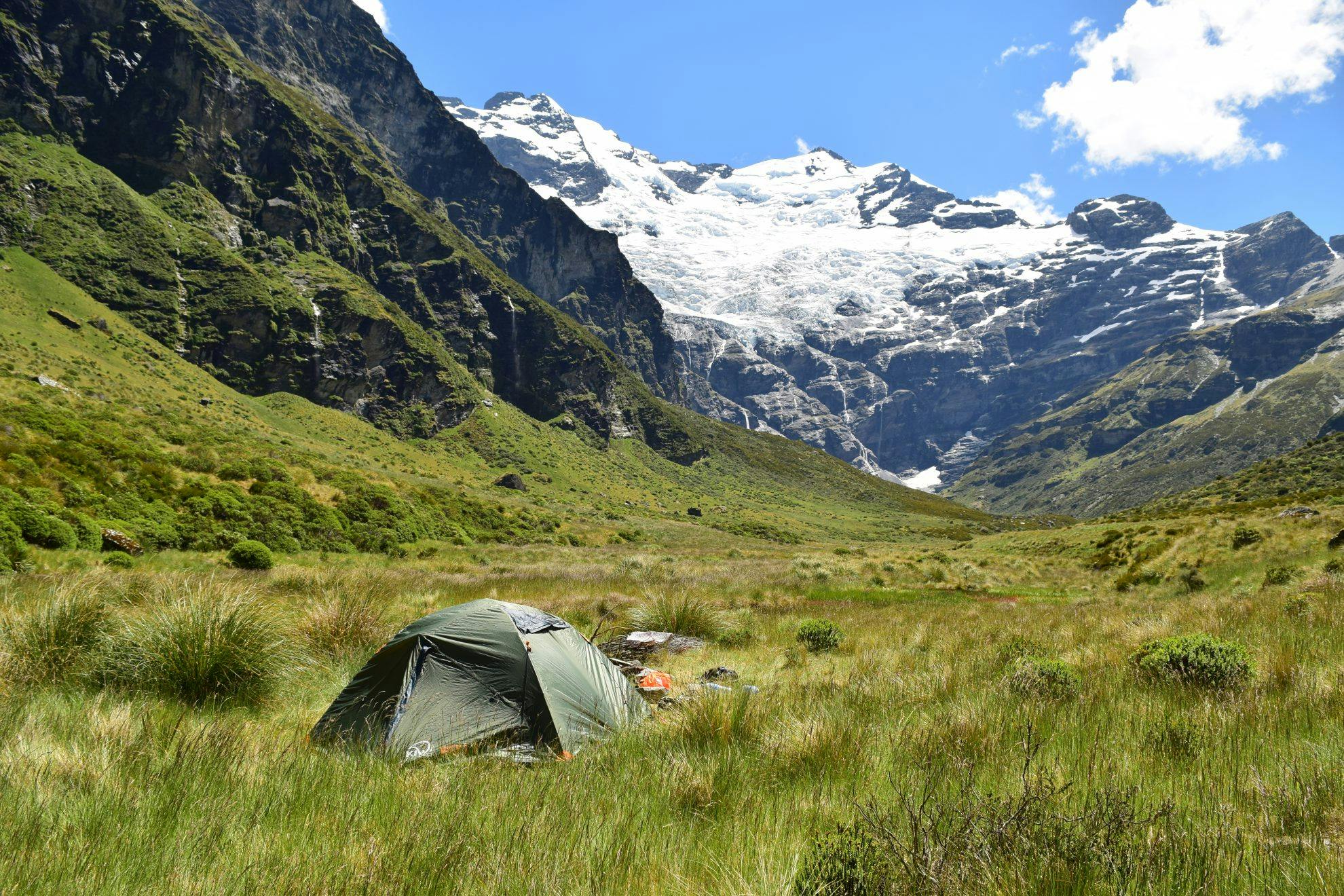A wrap of the biggest stories and best writing about the outdoors from New Zealand and around the world.
The growing popularity of photogenic Earnslaw Burn is causing concern, NZ Herald reports.
Wakatipu Tramping Club member Greg Thompson was surprised to find more than 30 vehicles at the trailhead, and about 60 people camping in a “tent city” at the head of the valley on a summer weekend.
He later discovered a selfie in front of the basin’s glacial waterfalls is becoming a popular shot on Instagram.
DOC’s Geoff Owen said popularity of the Earnslaw Burn track has grown over the past couple of years, but puts the track’s busyness down to a “good weather window”.
He hasn’t heard of any major issues at the site, but will continue to monitor and review it as needed.
Australian climber calls out false summits
Australian mountaineer Damien Gildea has claimed climbers routinely stop short of the summit on some of the world’s highest mountains, Adventure Journal reports.
The claims were first published in the American Alpine Journal, and cast a bombshell on the climbing community.
The research has been conducted by a team of amateur investigators, and uses analysis of summit photos, satellite imagery and other data.
Gildea said the research “has led to the remarkable situation where it is possible that no one has stood on the true highest point of all the 8,000-meter peaks.”
The study concludes that only about half the climbers claiming a summit of Annapurna (8,091m) and almost all climbers on Manaslu (8,163m) had not reached the highest summit.
Sound lure find trapping success
South Taranaki primary school students have impressed judges with their innovative predator lures, which use sound as bait.
The invention has won the Auroa School students the national Tahi Rua Toru Tech challenge, a digital technology competition for schools, Stuff reports.
The lures, which use sound bites such as baby birds to attract predators, are being trialled on nearby farms, on Taranaki Maunga by DOC, and by trappers in the South Island.
“We want more people to start using them so that we can gather data from different places,” 11-year-old Sophie van den Brand said.
Dolphin drone promising for conservation
A sophisticated drone may turn the tides for the critically endangered Māui dolphin.
The intelligence-powered tracking drone, developed by not-for-profit organisation MĀUI63, will autonomously find, follow and identify Māui and Hector’s dolphins, Stuff reports.
Co-founder Dr Rochelle Constantine said the dolphins are “our most urgent conservation problem”.
“We currently don’t have a robust understanding about Māui dolphin distribution, particularly during winter months and at different times of the day and night,” she said.
The $350,000 drone can fly up to 160km/h and has a 50km range and a 50x zoom lens which can identify Māui and Hector’s dolphins from hundreds of metres above the ocean.
The drone’s data will be uploaded and shared for the public to monitor.
Wild toileting on the rise in the UK
‘Wild toileting’ is causing problems in the UK.
The problem isn’t new, reports The Guardian, as cash-strapped councils have been shutting down public toilets for years, and relying on businesses to accommodate caught-short customers.
Covid, however, has worsened the issue, as shops, cafes and public toilets have been closed, and people are left with nowhere to relieve themselves.
Some are calling on Boris Johnson to make responsible tourism a priority when travel restrictions ease.
Read the full story here.







